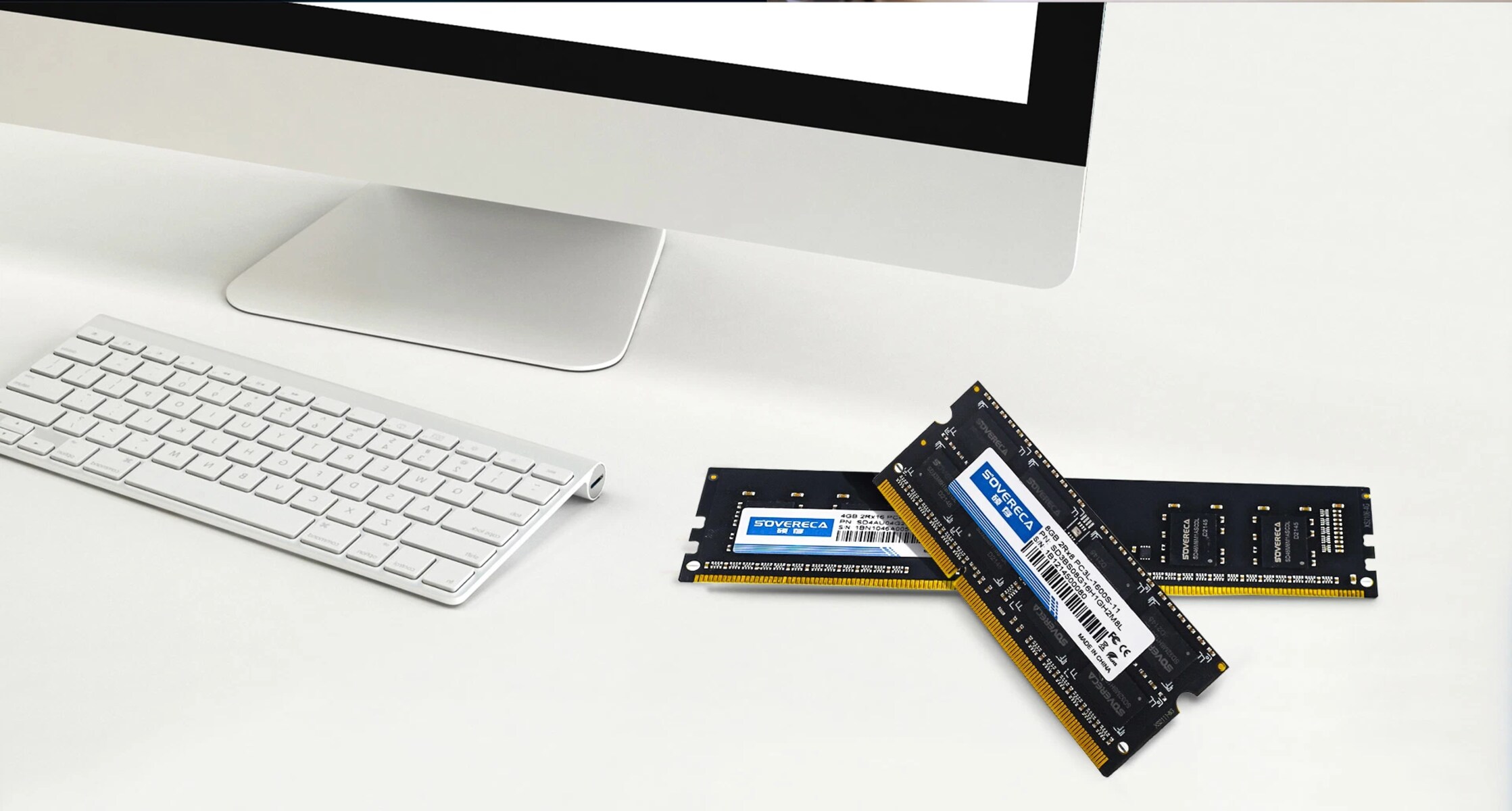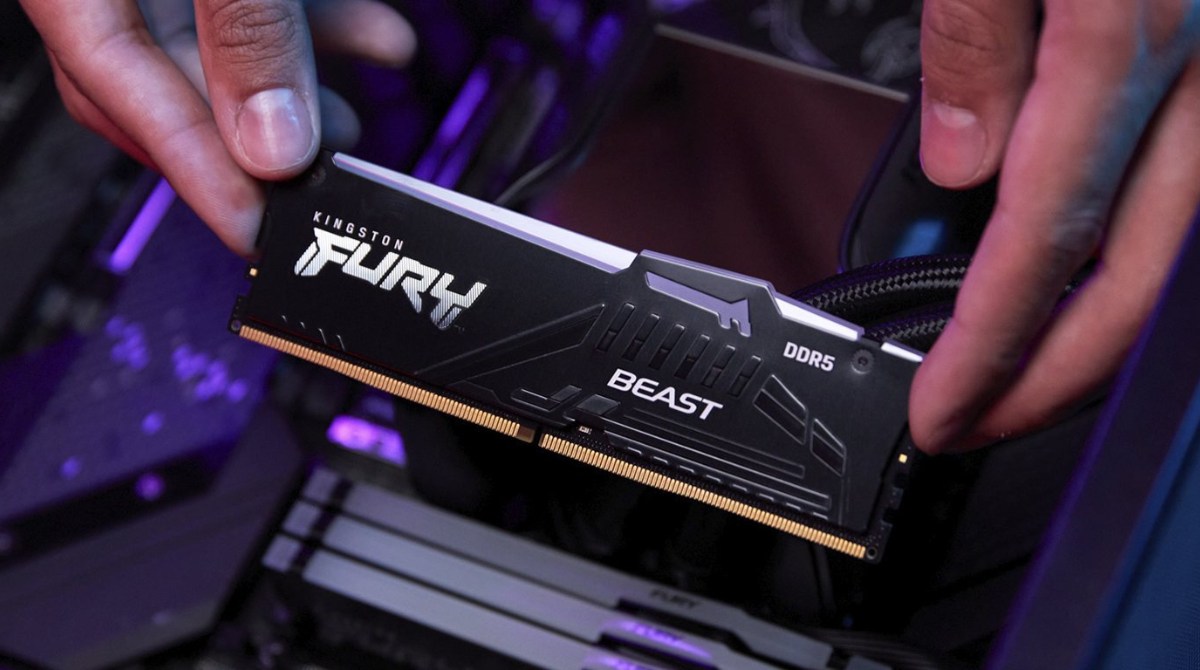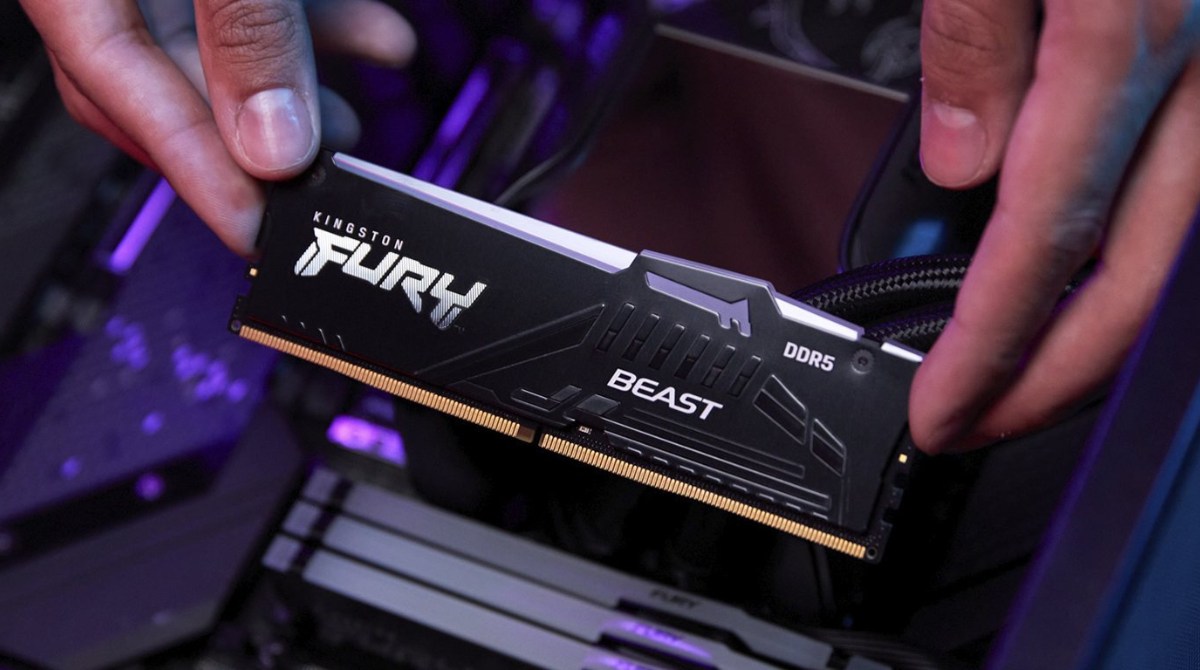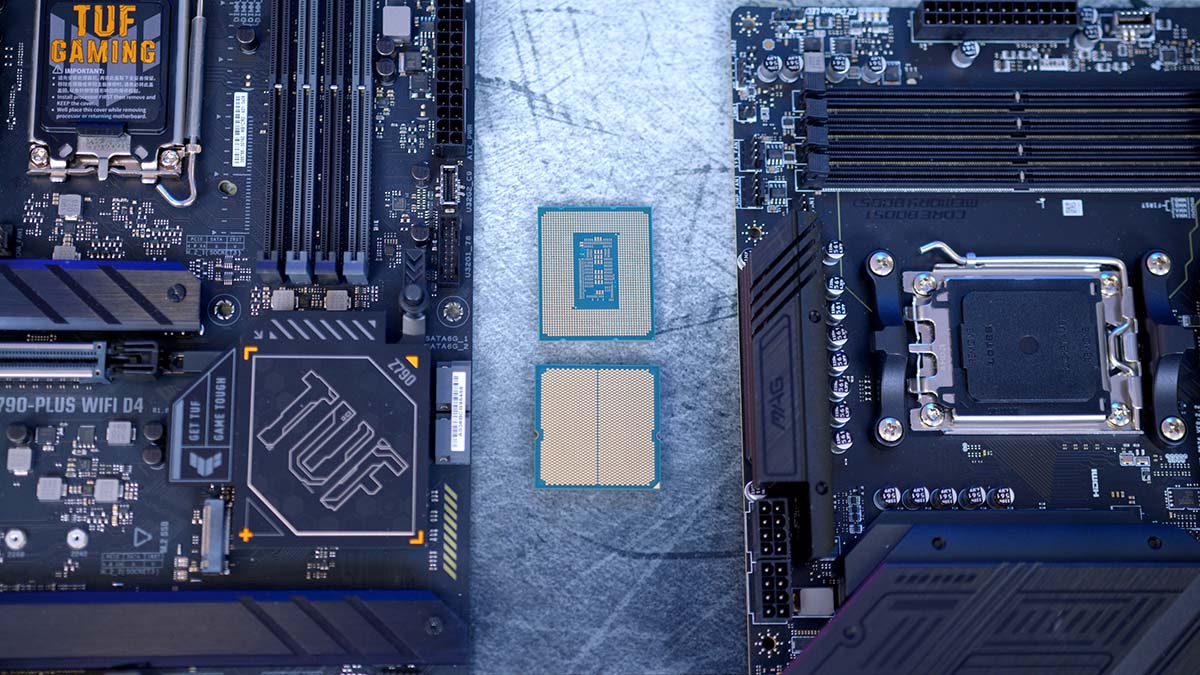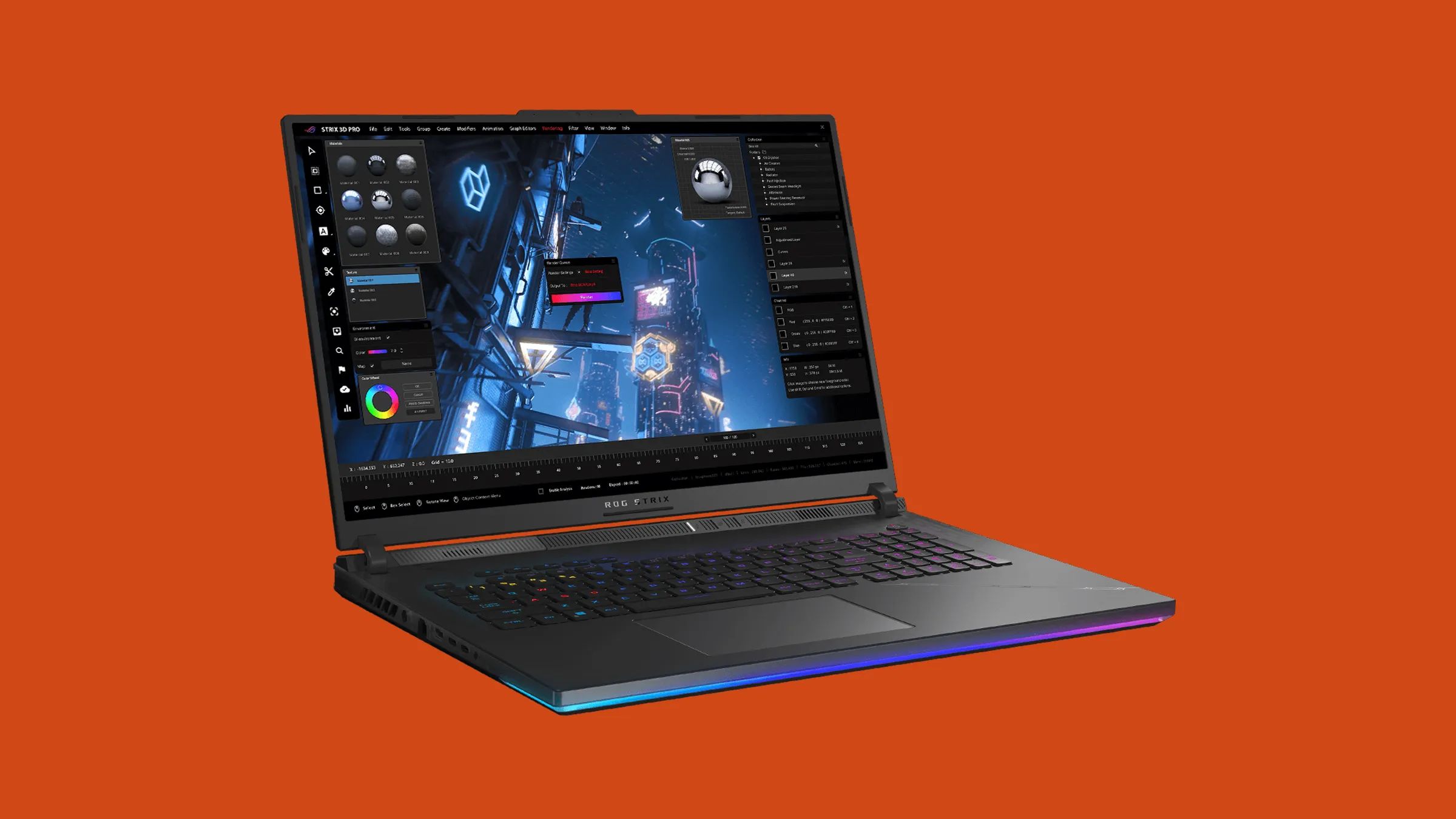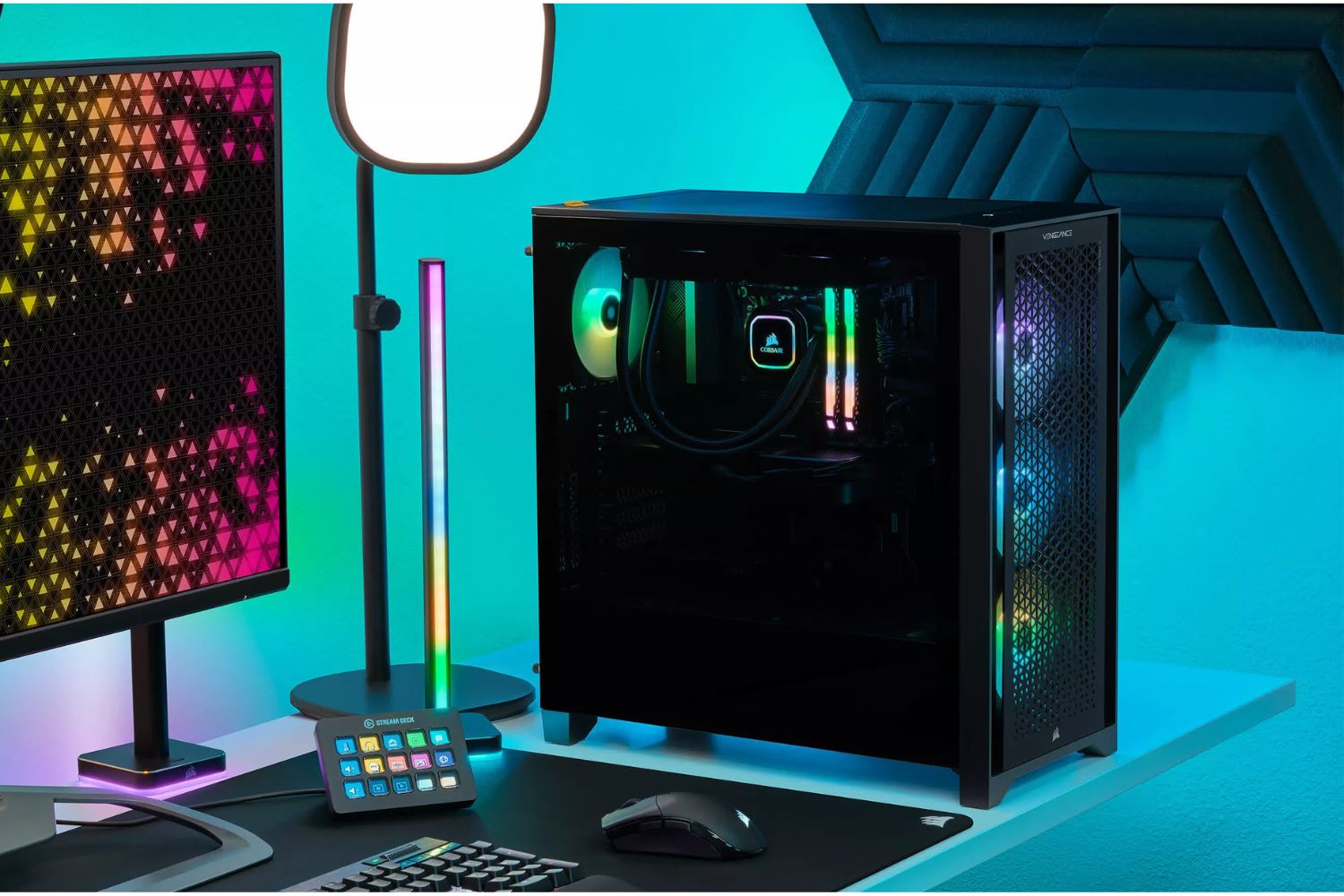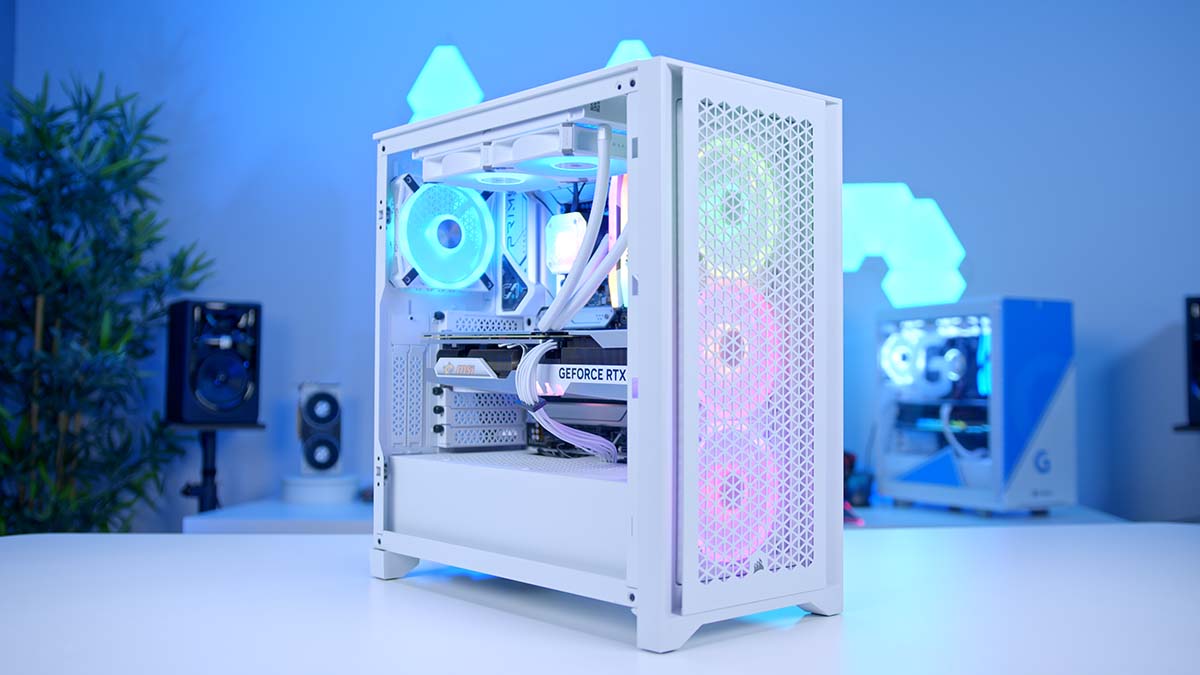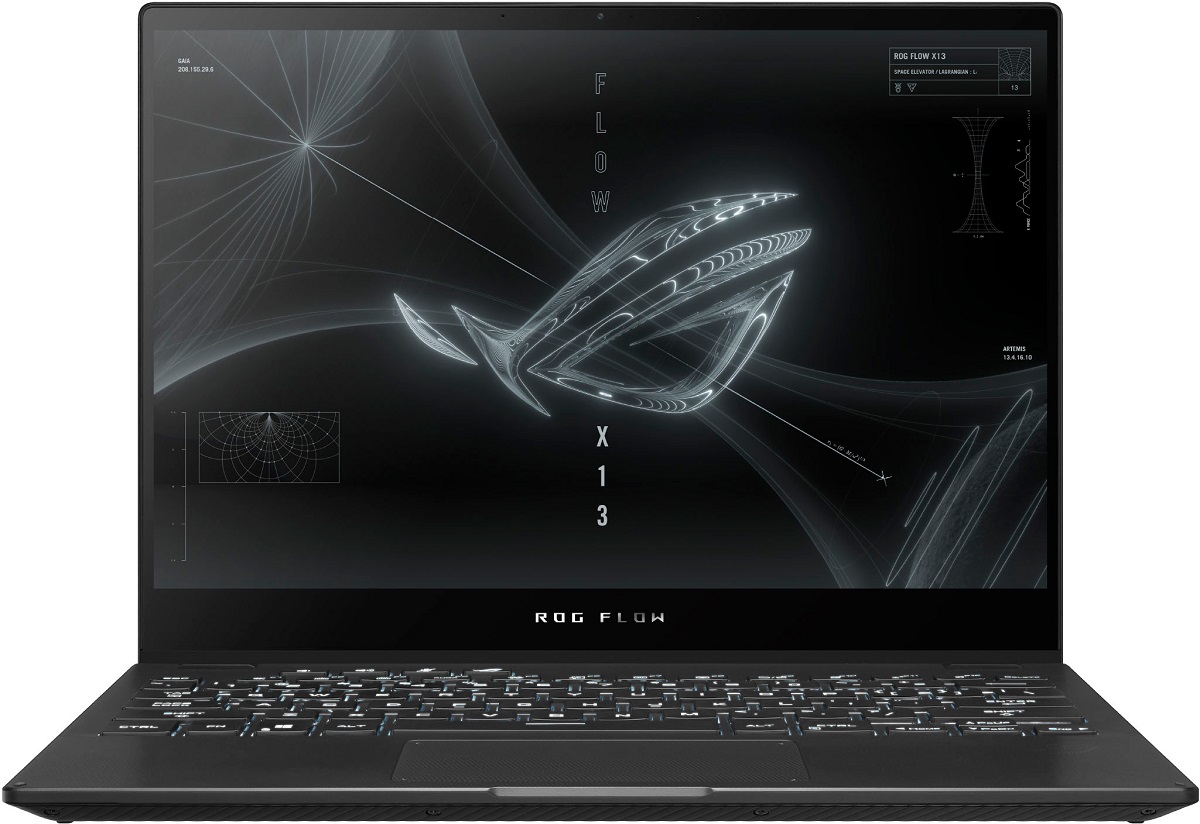Introduction
Welcome to our comprehensive guide on DDR4 RAM power consumption. As technology continues to evolve, computer components are becoming more powerful and energy-efficient. DDR4 RAM, or Double Data Rate 4 Random Access Memory, is the latest standard of memory modules used in PCs, laptops, and servers. It offers improved performance, higher data transfer rates, and increased memory capacity compared to its predecessor, DDR3 RAM.
In this article, we will explore the power consumption of DDR4 RAM and discuss the various factors that can influence it. Understanding how much power your RAM consumes can help you optimize your system’s energy usage, resulting in better efficiency and reduced electricity costs.
Whether you are a computer enthusiast, a professional dealing with high-performance systems, or simply curious about the inner workings of your computer, this guide will provide you with valuable insights into DDR4 RAM power consumption and how to manage it effectively.
Throughout this article, we will also touch on the impact of overclocking on power consumption and address ways to enhance the energy efficiency of DDR4 RAM. By implementing these strategies, you can strike a balance between performance and power consumption, ensuring that your system operates optimally without unnecessary strain on your electricity bill.
So, if you are ready to dive into the world of DDR4 RAM power consumption and discover ways to maximize efficiency, let’s explore the fascinating realm of memory modules and the energy they consume.
Understanding DDR4 RAM
DDR4 RAM, which stands for Double Data Rate 4 Random Access Memory, is a type of memory module commonly used in modern computers. It is the successor to DDR3 RAM and offers several significant improvements in terms of performance and efficiency.
DDR4 RAM operates at higher speeds and boasts increased memory capacity compared to its predecessor. It achieves this by employing a more advanced architecture that allows for faster data transfer rates. DDR4 RAM modules are available in different capacities, ranging from 4GB to 128GB, providing ample room for storing and accessing data.
The key advantage of DDR4 RAM lies in its improved data transfer rates. DDR4 RAM modules can transfer data at speeds of up to 3200 MT/s (megatransfers per second), which is significantly faster than the maximum transfer speeds of DDR3 RAM. This higher bandwidth allows for quicker retrieval of data and improved multitasking capabilities.
Another important aspect of DDR4 RAM is its lower operating voltage. DDR4 RAM modules typically operate at 1.2V, compared to the 1.5V or higher required by DDR3 RAM. This reduction in voltage results in lower power consumption and improved energy efficiency, making DDR4 RAM a more eco-friendly option.
Furthermore, DDR4 RAM implements several new features and technologies to enhance performance and reliability. These include on-die ECC (Error Correcting Code) and CRC (Cyclic Redundancy Check) capabilities, which help identify and correct memory errors. DDR4 RAM also supports higher data integrity and better signal integrity, ensuring stable and reliable performance.
Overall, DDR4 RAM offers significant improvements in terms of speed, capacity, and efficiency compared to previous generations of RAM. Its increased data transfer rates, lower operating voltage, and enhanced features make it an ideal choice for demanding tasks such as gaming, video editing, and 3D rendering.
In the next section, we will delve into the power consumption of DDR4 RAM and explore the factors that can influence it. Understanding these factors is crucial for optimizing power usage and ensuring the efficient operation of your system.
Power Consumption of DDR4 RAM
The power consumption of DDR4 RAM is an essential consideration when building or upgrading a computer system. RAM modules contribute to the overall power consumption of a system, and understanding their energy usage can help in managing power efficiently.
DDR4 RAM consumes power primarily during two operational modes: active and idle. The power consumption varies depending on the module’s operating frequency, voltage, and the data transfer load.
During active operation, when the RAM is actively reading or writing data, the power consumption is higher. The power consumed is proportional to the frequency at which the RAM operates. Higher frequency RAM modules consume more power compared to their lower frequency counterparts.
Idle power consumption, on the other hand, refers to the power consumed when the RAM is not actively involved in data transfer. When the system is in an idle state or during low memory usage tasks, the RAM may enter a power-saving mode, reducing its power consumption. DDR4 RAM modules support various power-saving features, such as self-refresh and deep power-down modes, which help minimize power usage during idle periods.
It is worth mentioning that the power consumed by DDR4 RAM is relatively low in comparison to other components such as the CPU or GPU. However, as RAM capacities increase and applications become more resource-intensive, the overall power consumption of RAM can still have a significant impact on the system’s energy efficiency.
One important consideration when it comes to power consumption is the module’s operating voltage. DDR4 RAM modules typically operate at 1.2 volts, which is lower than the 1.5 volts or higher required by DDR3 RAM. This reduction in voltage not only contributes to lower power consumption but also helps reduce heat generation. Lower operating voltage results in improved energy efficiency and allows for better overclocking potential with reduced thermal issues.
Factors such as the number of RAM modules installed, their frequencies, and the load on the system can also impact the total power consumption. It is advisable to choose the appropriate RAM configuration according to your computing needs, ensuring optimal performance while keeping power consumption in check.
In the next section, we will discuss the various factors that influence the power consumption of DDR4 RAM modules. Understanding these factors is crucial for effectively managing power usage and optimizing the overall energy efficiency of your system.
Factors Affecting Power Consumption
Several factors can influence the power consumption of DDR4 RAM modules. Understanding these factors is essential for optimizing power usage and ensuring the efficient operation of your computer system. Let’s explore some of the key factors:
1. Operating Frequency: The operating frequency of DDR4 RAM directly affects its power consumption. Higher-frequency RAM modules generally consume more power compared to lower-frequency ones. When selecting RAM for your system, consider your performance requirements and strike a balance between speed and power consumption.
2. Voltage: DDR4 RAM operates at a lower voltage of 1.2 volts, compared to the higher voltages required by previous RAM generations. This reduction in voltage not only contributes to lower power consumption but also helps in improving energy efficiency and reducing heat generation.
3. Capacity and Module Configuration: The capacity and configuration of DDR4 RAM modules can impact power consumption. Larger capacity modules tend to consume slightly more power than lower capacity ones. Additionally, having multiple RAM modules installed can increase overall power consumption, especially if they are operating at higher frequencies.
4. Load and Data Transfer Rate: The power consumed by DDR4 RAM is proportional to the data transfer rate and the load on the module. During active operation with heavy data transfers, the power consumption will be higher compared to idle or low usage scenarios. It is important to consider the workload requirements of your system and choose RAM accordingly.
5. Cooling and Thermal Solutions: Heat generated by DDR4 RAM can impact its performance and power consumption. Proper cooling and thermal management measures, such as using efficient heat spreaders and ensuring proper airflow within the system, can help in maintaining optimal operating temperatures. This, in turn, can contribute to lower power consumption and improved longevity of the RAM modules.
6. Overclocking: Overclocking your DDR4 RAM can result in increased power consumption. When you push the RAM frequency beyond its default specifications, the voltage and power requirements may also increase. It’s important to be aware of the potential impact on power consumption and consider the trade-offs between performance gains and increased power usage.
By considering these factors, you can make informed decisions when selecting DDR4 RAM modules for your system. Striking the right balance between performance and power consumption is crucial to ensure optimal efficiency and a stable computing experience.
In the next section, we will delve deeper into the typical power consumption values of DDR4 RAM to provide you with a better understanding of the energy requirements associated with these memory modules.
Typical Power Consumption of DDR4 RAM
DDR4 RAM modules are designed to be energy-efficient while delivering high-performance computing. The power consumption of DDR4 RAM can vary depending on several factors, such as the operating frequency, voltage, and module configuration. Understanding the typical power consumption values can help you estimate the energy requirements of your system and make informed decisions.
The power consumption of DDR4 RAM modules is measured in watts (W) and can range from a few watts to around 10 watts per module. However, it’s important to note that these values may vary depending on the specific manufacturer, model, and configuration of the RAM module.
For lower capacity DDR4 RAM modules, such as 4GB or 8GB, the typical power consumption can be around 2-3 watts during active operation. As the capacity increases, for example, with 16GB or 32GB modules, the power consumption may range from 3-5 watts. These values can go up slightly if the RAM is operating at higher frequencies or under heavy load.
When it comes to idle power consumption, DDR4 RAM modules are designed to be energy-efficient and feature power-saving modes. During idle or low usage periods, the RAM may enter self-refresh or deep power-down states to minimize power consumption. In these power-saving modes, the power consumption can be as low as 0.1 watt or even less, significantly reducing energy usage when the RAM is not actively involved in data transfer.
It’s important to keep in mind that the power consumption of DDR4 RAM modules is a fraction of the overall power consumed by a computer system. The CPU, GPU, storage devices, and other components also contribute to the total power consumption.
By understanding the typical power consumption values of DDR4 RAM modules, you can estimate the power requirements of your system and plan for efficient power management. It’s worth noting that these values should serve as a general guideline, and actual power consumption may vary depending on various factors.
In the next section, we will discuss the impact of overclocking on the power consumption of DDR4 RAM modules. Overclocking can provide performance gains but often at the cost of increased power usage.
Impact of Overclocking on Power Consumption
Overclocking refers to increasing the operating frequency and voltage of DDR4 RAM modules beyond their default specifications to achieve higher performance. While overclocking can provide significant performance gains, it often comes at the cost of increased power consumption.
When you overclock your DDR4 RAM modules, you push them beyond their designed limits, forcing them to operate at higher frequencies and sometimes at increased voltages. This increased frequency and voltage lead to higher power requirements, resulting in increased power consumption.
Higher operating frequencies increase the data transfer rate of the RAM, allowing for faster access to stored information. However, the increased frequency also requires more power to sustain stable operation. The power consumption of DDR4 RAM modules can increase by a significant margin when overclocked, depending on the specific overclocking settings applied.
In addition to frequency, adjusting voltage settings during overclocking can also impact power consumption. Increasing the voltage supplied to the RAM modules can increase stability and allow for higher overclocks. However, higher voltage levels also result in increased power consumption, potentially negating any efficiency gains achieved through overclocking.
It’s important to note that the actual power consumption increase due to overclocking will vary depending on the extent of the overclock, the specific RAM module’s characteristics, and the efficiency of the system’s power delivery mechanisms. It is recommended to monitor the power consumption and temperatures carefully when overclocking DDR4 RAM, ensuring that adequate cooling is in place to handle the increased heat generated.
While overclocking can provide performance boosts, it’s crucial to consider the trade-offs between increased power consumption, heat generation, and potential stability issues. Properly balancing the performance gains with the associated power requirements is necessary to avoid excessive power usage and potential system instability.
Ultimately, the decision to overclock DDR4 RAM should be based on your specific needs and requirements. If you require maximum performance and are willing to manage the increased power consumption and potential risks associated with overclocking, it can be a viable option. However, if power efficiency is a priority or if you are not comfortable with the potential drawbacks, running DDR4 RAM modules at their default specifications is perfectly fine and can still provide excellent performance.
In the next section, we will discuss ways to enhance the energy efficiency of DDR4 RAM modules and reduce power consumption without resorting to overclocking.
Energy Efficiency of DDR4 RAM
DDR4 RAM modules are designed with energy efficiency in mind, offering improved performance while minimizing power consumption. Energy efficiency is a key consideration for modern computing systems, as it not only helps reduce electricity costs but also contributes to a greener and more sustainable environment.
One of the primary factors contributing to the energy efficiency of DDR4 RAM is its lower operating voltage. DDR4 RAM modules typically operate at 1.2 volts, compared to the higher voltages required by previous RAM generations. This reduction in voltage helps reduce power consumption without compromising performance, making DDR4 RAM more energy-efficient.
In addition to the lower operating voltage, DDR4 RAM modules implement various power-saving features to further enhance efficiency. These features include self-refresh and power-down modes, which allow the RAM to reduce power consumption during idle or low usage periods. When the system is not actively accessing the RAM, it enters a low-power state, consuming minimal energy.
DDR4 RAM modules also incorporate advanced power management capabilities, such as on-die ECC (Error Correcting Code) and CRC (Cyclic Redundancy Check) features. These technologies not only help improve data integrity and reliability but also contribute to better energy efficiency by reducing the number of memory-related errors and processing overhead.
Another aspect contributing to the energy efficiency of DDR4 RAM is its ability to maintain high data transfer rates with lower power consumption. The improved architecture and higher bandwidth of DDR4 RAM enable faster access to data, reducing the time required for data retrieval and processing. This efficiency in data transfer and processing helps minimize power usage, especially during memory-intensive tasks.
Choosing the appropriate DDR4 RAM configuration for your system requirements can also enhance energy efficiency. Opting for the right capacity and frequency of RAM modules can ensure optimal performance without unnecessary power consumption. It’s important to consider your specific needs and strike a balance between performance and power efficiency.
Lastly, proper cooling and thermal management of DDR4 RAM modules can further enhance their energy efficiency. The use of efficient heat spreaders and ensuring adequate airflow within the system helps dissipate heat and prevents thermal throttling. By maintaining optimal operating temperatures, you can reduce power consumption and improve the longevity of the RAM modules.
In summary, DDR4 RAM modules offer improved energy efficiency compared to previous RAM generations. The lower operating voltage, power-saving features, advanced power management technologies, and efficient data transfer rates contribute to the overall energy efficiency of DDR4 RAM. By considering these factors and implementing proper cooling measures, you can optimize the power usage of your DDR4 RAM modules and create a more energy-efficient computing system.
Tips to Reduce DDR4 RAM Power Consumption
Reducing the power consumption of DDR4 RAM modules can help improve energy efficiency and contribute to lower electricity costs. By implementing a few simple tips and strategies, you can effectively manage the power usage of your DDR4 RAM. Here are some helpful tips:
1. Optimize RAM Capacity: Choose the right RAM capacity based on your computing needs. Installing more RAM than necessary can increase power consumption without providing significant performance benefits. Evaluate your requirements and select the appropriate RAM capacity to minimize power usage.
2. Select Lower Frequency RAM: Higher frequency RAM modules generally consume more power. If the increased performance from higher frequency RAM is not essential for your specific tasks, consider selecting RAM modules that operate at lower frequencies. This can help reduce power consumption without sacrificing overall system performance.
3. Utilize Power-Saving Modes: Take advantage of the power-saving features available in DDR4 RAM modules. These features include self-refresh and power-down modes, which allow the RAM to enter low-power states during idle periods. Enabling these modes can significantly reduce power consumption without affecting system responsiveness.
4. Avoid Unnecessary Overclocking: While overclocking can provide performance gains, it also increases power consumption. If power efficiency is a priority for you, avoid unnecessary overclocking of your DDR4 RAM. Stick to the manufacturer’s recommended specifications or consider mild overclocking with careful monitoring of power usage.
5. Maintain Proper Cooling: Proper cooling and thermal management can help reduce power consumption and enhance the longevity of DDR4 RAM modules. Ensure that your system has adequate ventilation, case fans, and efficient heat spreaders to dissipate heat effectively. Avoid excessive heat build-up, which can lead to increased power consumption and potential performance issues.
6. Update BIOS and Drivers: Keeping your system’s BIOS and drivers up to date can help improve overall system efficiency, including RAM power consumption. Manufacturers often release updates that optimize power management and improve compatibility with newer RAM modules. Regularly check for updates and install them to ensure optimal performance and power efficiency.
7. Invest in Energy-Efficient Components: Consider utilizing other energy-efficient components in your system, such as energy-efficient CPUs and power supplies. When these components work in tandem with DDR4 RAM, you can create a more power-efficient system overall, reducing energy consumption and environmental impact.
8. Use Power Management Software: Consider installing power management software that allows you to monitor and manage power usage. These tools can provide insights into RAM power consumption and allow you to implement power-saving configurations. They can also help identify any abnormal spikes in power usage that might indicate potential issues.
By following these tips, you can effectively reduce the power consumption of your DDR4 RAM modules and optimize your system’s energy efficiency. Remember, every small power-saving measure adds up, resulting in long-term cost savings and a more eco-friendly computing experience.
Conclusion
DDR4 RAM modules are not only essential components of modern computer systems but also play a significant role in overall power consumption and energy efficiency. Understanding the power consumption of DDR4 RAM and implementing strategies to manage it effectively can result in improved system performance, reduced electricity costs, and a more sustainable computing experience.
In this comprehensive guide, we explored various aspects of DDR4 RAM power consumption, including its typical power usage, factors influencing power consumption, the impact of overclocking, and tips to reduce power consumption. We learned that DDR4 RAM operates at a lower voltage compared to previous RAM generations, resulting in improved energy efficiency. Additionally, power-saving features and efficient data transfer rates contribute to reduced power consumption during idle and active operations.
Factors such as RAM capacity, operating frequency, load, and cooling also affect the power consumption of DDR4 RAM modules. By carefully selecting the appropriate RAM configuration, optimizing cooling solutions, and avoiding unnecessary overclocking, you can reduce power usage without compromising performance.
Furthermore, we discussed the energy efficiency of DDR4 RAM and the importance of power management in creating a more eco-friendly computing environment. Utilizing power-saving modes, maintaining proper cooling, and investing in energy-efficient components all contribute to a more power-efficient system overall.
By implementing the tips and strategies provided in this guide, you can not only enhance the energy efficiency of your DDR4 RAM but also contribute towards a greener and more environmentally sustainable computing ecosystem. Conserving power consumption not only benefits your wallet but also helps reduce the strain on energy resources and minimizes the environmental impact of your computing activities.
Remember, making informed decisions regarding DDR4 RAM power consumption is essential for both power-conscious individuals and organizations. By optimizing power usage without compromising performance, you can create a more efficient and sustainable computing system that aligns with your specific needs.
We hope that this guide has provided you with valuable insights into DDR4 RAM power consumption and offered practical guidance on managing and reducing power usage effectively. Utilize the knowledge you have gained here to make informed decisions and optimize the energy efficiency of your DDR4 RAM modules, ultimately leading to a more energy-conscious and environmentally friendly computing experience.







